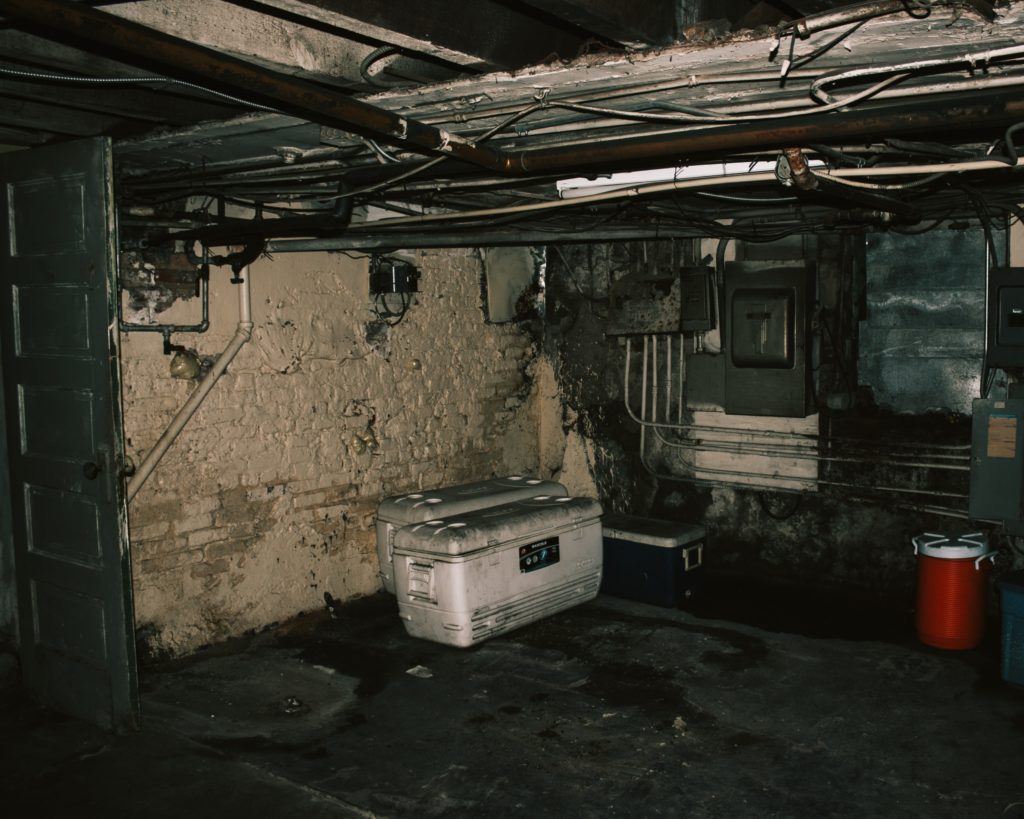Part 6: The Basement
Homeowners are often confused by basements in a real estate transaction. In this installment of common defects found in a Home Inspection, I will discuss the several types of basements and how each of them are inspected. I will also review what counts as square footage in a basement and how basements are classified in a transaction.
There are three types of basements and each have their own uses and advantages. Home inspectors will inspect each of these in a little different manner. For example, if a basement is finished or partially finished a home inspector will place a radon test on the basement level. If it is unfinished the radon test will be placed on the first floor. I tell clients it is to be placed on the lowest livable level.
Unfinished Basements

An unfinished basement usually has no drywall, formal flooring or furniture. It is usually used for laundry, a workshop, storage and more. In a real estate transaction, an unfinished basement does not count as square footage. A home inspector will still be required to evaluate this area. If your home inspector charges by the square foot, you should know that they will be charging for that area OR they will have factored the pricing into their reported square footage. Either way, they must inspect it and report any defects.
Basic areas of Inspection of Unfinished Basement
- Moisture Problems – Mold, mildew, musty odors, rotting wood or mineral deposits on walls may be an indication of moisture problems
- Pests – termites, roaches, ants and other insects as well as rodents can be attracted by moisture in a basement. If there is evidence of pests a further pest inspection and treatment may be required. If it is due to a moisture problem, that issue should be resolved or the pests will likely return. I have more info on termites in my article Invisible Hazards: Unseen Problems in Your Home.
- Structure Defects – I check to make sure the walls, ceiling and beams are solid. I look for lazy or incomplete joists. This can cause the above floors to sag or be uneven. I told you earlier that moisture or water damage can cause rot. Significant rot can cause structural defects.
- Electrical – Older homes may still have the knob-and-tube or aluminum wiring. Outdated wiring systems can be a fire hazard as discussed in the Invisible Hazards article. I also check for proper outlets including GFCI receptacles. Junction boxes and breaker panels are checked. I look for strange lighting behavior like flickering lights and empty switches.
- Plumbing – Plumbing is a very big part of a basement inspection, I determine where the water comes into the house and what kind of piping is used. I make sure there are no leaks and that the piping is in acceptable condition. Besides where water comes in, I inspect where water leaves the house. Drains should be working properly. The water heater will be inspected and any issues noted. I will discuss water heaters more in the final article of this series.
- HVAC – I am just going to note that the HVAC system is usually located in the basement and I will discuss it in the final article of this series.
Finished Basements

A Finished basement usually has drywall, flooring and furnishings. It may have bedrooms and bathrooms as well as other living spaces. For a basement bedroom to be counted as a bedroom in a real estate transaction, it must have a legal egress window as an escape route in case of fire.
Even if you have a fully finished basement and a bedroom with an egress window, it may not count as square footage in your real estate transaction. Each state is different but if your basement is completely underground, it probably won’t count. If your basement is partially underground and has a walkout door to a yard or garage, it may count as square footage if it has the other necessary requirements. Requirements may include walls and flooring as discussed above, a regular heat source (space heaters don’t count). Please note that even if your finished basement doesn’t count as square footage on your real estate listing (MLS), it still adds value to your home. Homes are typically not priced only on square footage; therefore, a well done finished basement can add significant value.
A finished basement is inspected the same way an unfinished basement is inspected. In addition to the list above, each room will need to be inspected in the same way discussed in earlier articles. Bathrooms, bedrooms and family living spaces will be evaluated as discussed in Part 4: The Interior.
Partially Finished Basements
A partially finished basement rarely counts as square footage on your real estate listing. It is basically somewhere in between the two types we discussed. It may have a living space (game room, tv room, family living space) and a bathroom but no bedrooms. The walls may be dry-walled but the floor may be cement instead of traditional flooring found on main floors. If it is below grade (underground), it will not count as square footage. If it is a walkout, you will need to discuss it with your real estate agent to see if it counts. A partially finished basement is fully inspected like in my previous two types.
Basements have other areas that need to be inspected. Water Heaters and HVAC systems are usually located in the basement. I will discuss these in detail in the next and final article in this series, Common Defects Found in a Home Inspection: Part 7 Everything Else.
